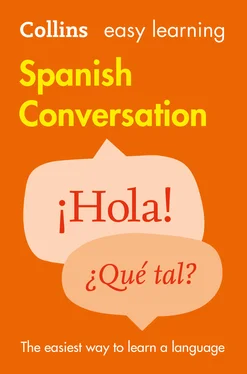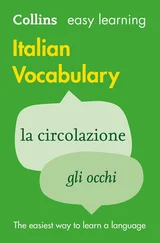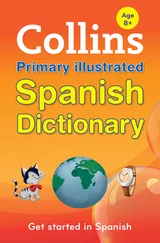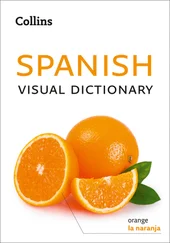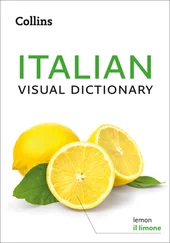• When meeting someone socially for the first time, you usually shake hands – darse la mano– if it’s a man, or kiss if it’s a woman. In business and formal situations, everybody would shake hands.
• Men who are on friendly terms usually shake hands or pat each other on the back, while women kiss - darse un beso. Men also kiss female friends and in some cases other men, for instance when they belong to the same family. Spanish people usually kiss twice, once on each cheek.
• If you hear someone talking about their pareja( partner ), remember that, although it’s a feminine noun, it is used for both men and women.
Getting there
¡Buen viaje! – Have a good trip!
Whether you’re hitting the road, boarding a train, catching a plane or heading for the high seas, this unit will help you check out the timetables and find the best routes using natural, confident Spanish.
In English we use I’m going to to talk about where we’re going and what we’re going to do. It’s just the same in Spanish. You use voy a( I’m going to ) before the name of a place or before another verb.
| La semana que viene voy aSegovia. |
I’m going toSegovia next week. |
| Voy apasar un día en Pamplona. |
I’m going tospend a day in Pamplona. |
| Primero vamos aMadrid. |
First, we’re going toMadrid. |
| Luego vamos aVigo. |
Then we’re going toVigo. |
| Vamos acoger el tren de las siete. |
We’re going toget the seven o’clock train. |
If you want to say what you’re planning to do on your travels, you can use tengo la intención de( I’m planning to ) followed by the infinitive. tengocomes from the verb tener( to have ). For more information on tener, see here.
| Tengo la intención deir a Málaga. |
I’m planning togo to Málaga. |
| Tengo la intención dealquilar un coche. |
I’m planning tohire a car. |
| Tenemos la intención deir por la costa. |
We’re planning totravel along the coast. |
SAYING WHAT YOU WANT TO DO
To talk about things that you want to do, use quiero( I want ) followed by the infinitive. quierocomes from the verb querer( to want ). For more information on querer, see here.
| Quierohacer varias excursiones. |
I want togo on several trips. |
| Quierover el Museo Guggenheim. |
I’d like tosee the Guggenheim Museum. |
| Queremosconducir los dos. |
Both of us want tobe able to drive. |
If you want to say what you feel like doing, you can use tengo ganas de( I feel like ) followed by an infinitive.
| Tengo ganas deparar en Cuenca para dar una vuelta. |
I feel likestopping in Cuenca to have a look around. |
| Tengo ganas dehacer una parada. |
I feel likestopping for a bit. |
When you want to explain what you’re hoping to do, use espero( I’m hoping ) followed by an infinitive.
| Esperollegar allí en unas tres horas. |
I’m hoping tobe there in about three hours. |
| Esperollegar allí antes de que se haga de noche. |
I’m hoping toget there before nightfall. |
| Esperovisitar el monasterio. |
I’m hoping tovisit the monastery. |
| Esperamosir a ver Montserrat. |
We’re hoping togo and see Montserrat. |
When discussing your travel plans, you may want to say what you’d like to do. To do this you can use me gustaría( I’d like ) followed by a verb in the infinitive.
| Me gustaríaver Madrid. |
I’d like tosee Madrid. |
| Me gustaríaalquilar un quad. |
I’d like tohire a quad bike. |
| Nos gustaríaasistir a la feria del vino. |
We’d like togo to the wine fair. |
When planning your trip, of course you won’t just want to say what you like and what you’d like to do, you’ll want to say what you’d rather do. Use prefiero( I prefer or I’d rather) or preferiría( I’d prefer or I’d rather ) to talk about your preferences.
| Prefieroir a pie. |
I’d ratherwalk. |
| Prefieroviajar en tren. |
I prefertravelling by train. |
| Yo preferiríair en autobús. |
I’d preferto go by bus. |
| Nosotros preferiríamosquedarnos en casa. |
We’d ratherstay at home. |
To make suggestions about what you could do, use podríamos( we could ) and podemos( we can ). They are both from the verb poder( to be able ). For more information on poder, see here.
| Podríamosir mañana. |
We couldgo tomorrow. |
| Podríamosir en el AVE. |
We couldtake the high-speed train. |
| Si lo prefieres, podríamosir andando. |
We couldwalk there, if you prefer. |
| Si quieres, podemoscoger un taxi. |
We cantake a taxi if you like. |
You can also make a suggestion in the same way as English, simply by asking ¿Por qué no…?( Why don’t… ?).
| ¿ Por qué nopreguntamos por coches de alquiler? |
Why don’twe ask about hiring a car? |
| ¿ Por qué nocogemos el metro? |
Why don’twe take the metro? |
| ¿ Por qué nocoges un taxi? |
Why don’tyou get a taxi? |
| ¿ Qué te parece sinos vamos a Toledo? |
How aboutgoing to Toledo? |
| ¿ Qué te parece sialquilamos una furgoneta? |
How abouthiring a van? |
| ¿ Qué te parece sivamos por la autopista? |
How abouttaking the motorway? |
To find out what someone wants to do, you can ask ¿Te gustaría…?( Would you like…? ) or ¿Te apetece…?( Do you fancy…? ) followed by an infinitive.
Читать дальше
